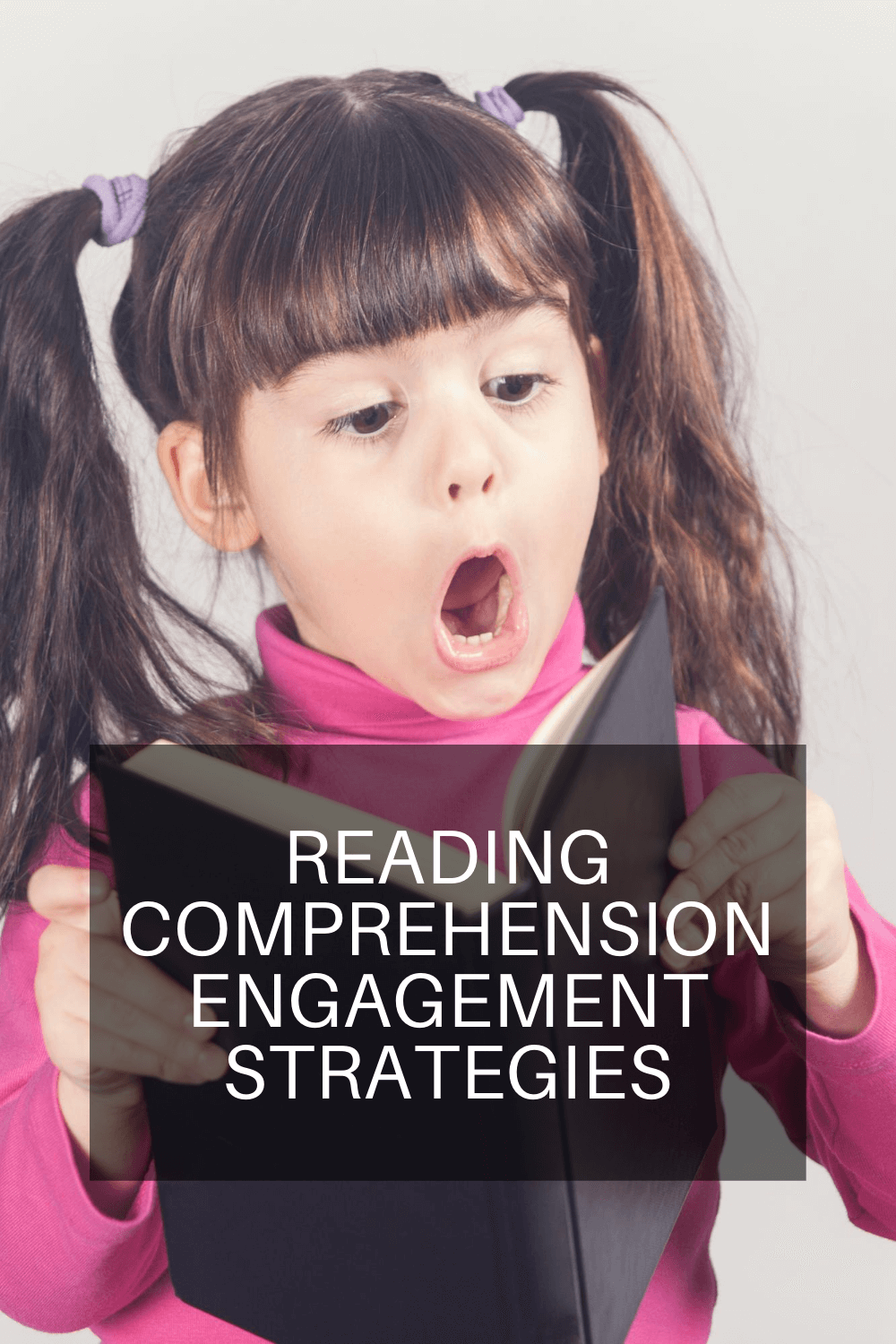Have you wondered how can you be engaging and teach reading comprehension? Engaging teaching during reading class is essential to help students grow their love of reading. I once had a student who looked at me and said, “I love reading at home, but I really don't love to read during reading class.” Why was this happening, I wondered? It was a little devastating, but I took a critical look at my reading instruction and decided there was very little variety in what I was asking the students to do each day. It was time to add some engagement strategies to spice up how I teach reading comprehension.

Shared Reading
Shared reading is typically used with younger students, BUT it is a great strategy when you are reading a complex text with a group of students and you want to focus on comprehension. It can be used when students are practicing a new strategy or when the text is pretty complex and you don't want them focusing on decoding. In shared reading, everyone reads together including the teacher. It supports all students in a way that they are reading, but not worrying about mispronouncing a word. But the miraculous thing about shared reading is how much intermediate students love it. it frees up their mind to focus on meaning. This strategy is very effective for reading in the content areas too. It engages all students while freeing them to think about science, social studies, or any other content.
If you want to know more about using Shared Reading with students of all ages, I suggest you read the book Whose Doing the Work?: How to Say Less So Readers Can Do More by Jan Burkins and Kim Yaris. They have a chapter devoted to Shared Reading and it really changed my views on using it with older students.
Add Concrete Examples
One of my favorite ways to make reading comprehension fun is to use concrete examples. There are tons of examples of how to do this is in Tanny McGregor's book Comprehension Connections. She uses an old well-loved slipper of her husband for inferencing. She uses her purse and items from it to discuss determining importance. It has great ideas and a lesson sequence for seven different comprehension strategies.
I have always used my purse and the items in it, to teach inferring. We take the things out of my purse. Then they use their knowledge about me and the items in my purse to make inferences about my life. After that, we work to apply that idea to their reading.
Teach Reading Comprehension Using Music and Art
Art and music tell a story so they are a great way to practice reading comprehension. I tend to gravitate toward using art. I have loved Norman Rockwell paintings since I was a child. They tell a great story and often feature children or familiar adults. You can teach problem and solution, characters, setting, inferring, or questioning with a great painting. Two of my favorite Rockwell paintings to use are The Shiner (a girl with a black eye sitting outside the principal's office) or Surprise (a class surprising their teacher on her birthday). Both paintings tell a story that is familiar to my students. Songs also tell an equally good story and are a great platform for discussions.
Wordless Picture Books
Similar to artwork, wordless picture books are great to teach reading comprehension. The author's carefully craft picture after to picture to reveal the story one or two details at a time. They create a story with no words but the students end up creating the meaning as they read along. Two of my favorite wordless picture books are Zoom by Istvan Banyai and Chalk by Bill Thomson. Both take the reader on a journey in a way they least expect it. These books engage students of all ages and keep them thinking. It really encourages students to develop a love of reading. Check out more tips on developing a love of reading with your students here.
Get Your Students Moving
I know students need to answer text-dependent questions in order for me to know they are proficient at comprehending grade-level texts. However, no one ever said the students have to sit in their seats to do this. I use these Reading Exit Tickets with my students to get them writing, but I try at times to creatively change up how they use them. I tape them to the walls in different spots so kids have to move to go from question to question. Sometimes, they create group responses to work with a team to answer them. At other times, I make them answer only one question. Then we discuss the answers in a large group so students can hear different types of questions. These Free Reading Exit Tickets will help you decide if this strategy will work well for you.

Now you know how to be engaging and teach reading comprehension. I try to do something engaging at least once during the week as I teach reading comprehension so my students never know what to expect. It adds excitement and helps them develop a love for reading!

This site contains affiliate links. This simply means if you buy something using our link, we will receive a very small portion of the sales. The price of the item is the same whether it is an affiliate link or not. It is our promise to you that we only recommend products or services we believe will add value to our readers. By using the affiliate links, you are helping support our Website, and we genuinely appreciate your support.

